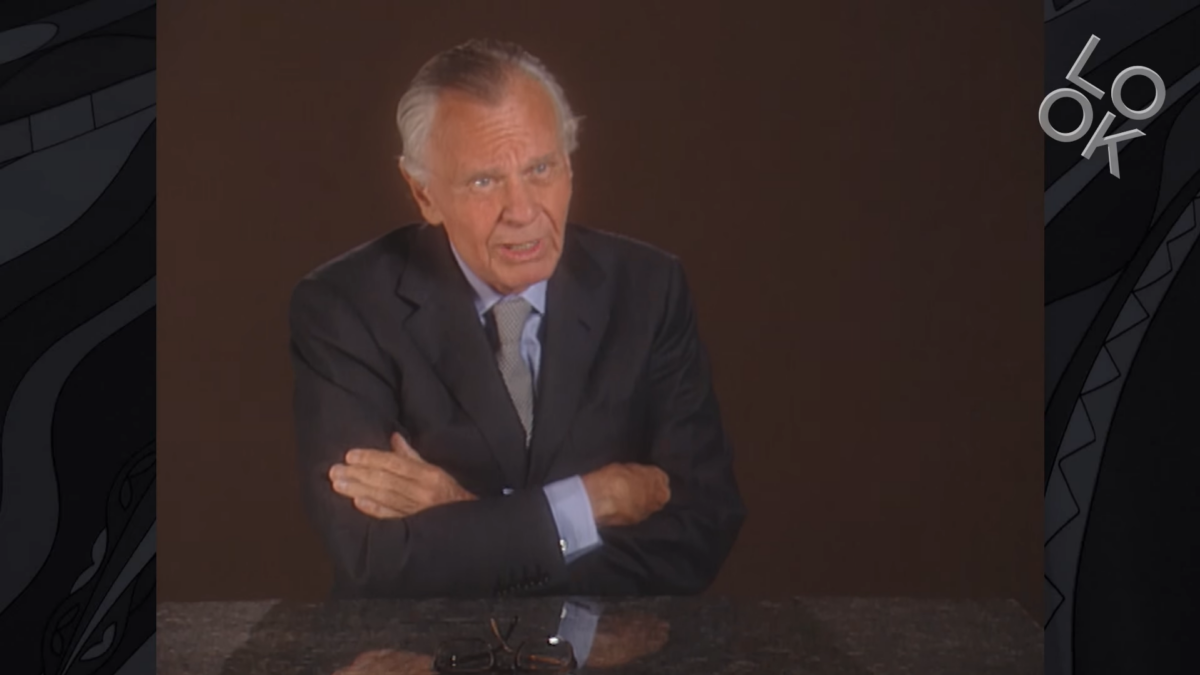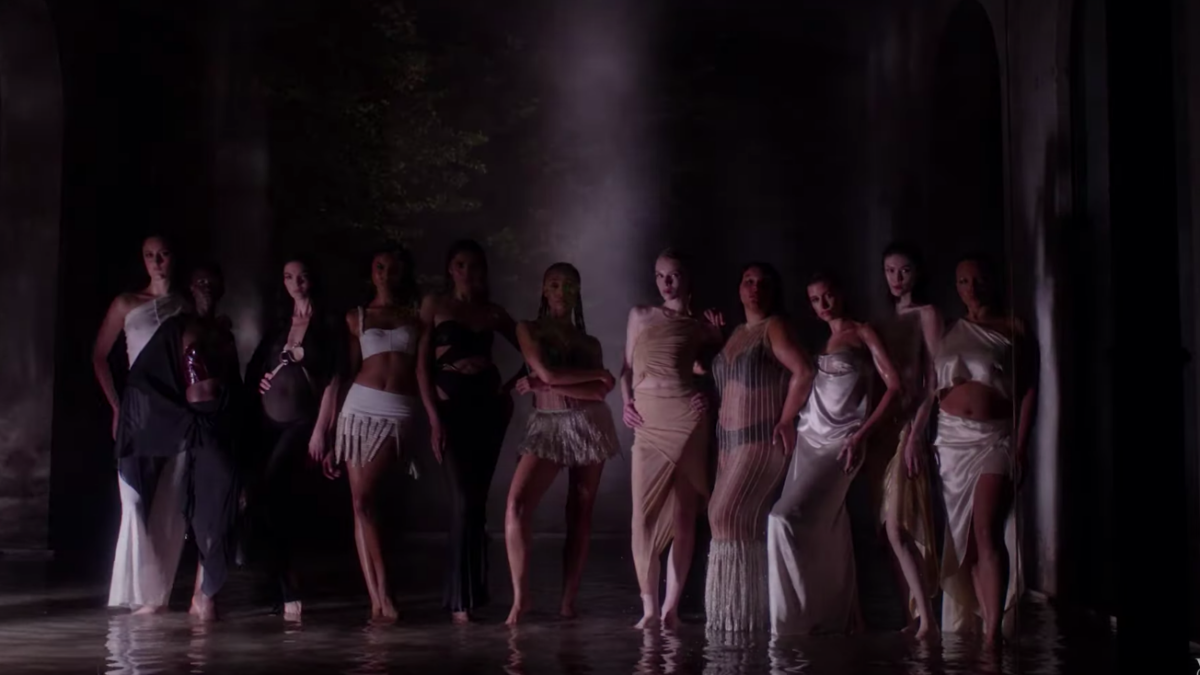June 22 marks the 100th birthday of fashion designer Bill Blass, who passed away in 2002 at the age of 79. But don’t expect any invitations to arrive for New York-based festivities.
To celebrate the iconic fashion designer, one must travel west 647 miles. Despite the fact that his personal and professional life were based in New York for more than 60 years, all significant celebrations in honor of Blass will take place in his hometown of Fort Wayne, Indiana.
The Bill Blass Blast, beginning June 22 and lasting 100 days, will feature a variety of events and exhibits at different venues, including the Fort Wayne Museum of Art and The Fort Wayne History Center. Bill Blass special edition Lincoln cars will be on display at a local dealership, and sculptor Greg Mendez has been commissioned to develop six statues that will each highlight Bill Blass designs.
Blass was a fashion industry pioneer, one of the first to license his name to products beyond clothing, including fragrance, furniture, and chocolate. He was the first couturier to create a menswear collection (in 1967), and one of the first American designers to step out from behind his design table, putting his name and face on a label.
Just why are 7th Avenue and New York in general turning a blind eye to Blass? Is the designer’s 100th birthday being ignored because he is old news, part of the past, and not modern or edgy enough, given fashion’s obsession with The Next Great Thing? Part of me hoped this was the case.
Yet the museum of my alma mater, the Fashion Institute of Technology, currently features an exhibit highlighting the careers of two designers who predate Blass, Christian Dior and Balenciaga, as “The Kings of Couture and Their Legacies.” After inquiries and investigation of the school’s website, I found no evidence of America’s most iconic designer.
Blass hasn’t always been snubbed. In the 1970s and 80s, he ruled the New York fashion world; his designs and image appeared regularly in “Vogue” and “Women’s Wear Daily.” The Bill Blass effect even traveled south to Washington.
In 1981, he became the first fashion designer to stage a show/fundraiser at the Phillips Collection. The show almost instantly sold out, and even President and Nancy Reagan made an appearance. Nina Hyde, a longtime fashion critic at The Washington Post, wrote, “Bill Blass is the designer of the 1980s. … He offers women pretty, glamorous clothes — modern without being jolting, sexy without being scary.”
In 1983, when I graduated from F.I.T., then as now an avant-garde fashion haven, Blass was our commencement speaker. No protesters or bomb threats interrupted his presentation. In 1999, F.I.T. gave him a Lifetime Achievement award. Earlier, the Council of Fashion Designers of America (CFDA) granted Blass a Lifetime Achievement Award in 1987, and its first Humanitarian Leadership Award in 1996.
New York City has also benefitted from his bountiful philanthropy, including a $10-million-dollar donation to the New York Public Library, and substantial gifts to the AIDS Care Center at Cornell University, also located in Manhattan.
So how is it that no significant celebrations of the designer’s 100th birthday will be held in New York? Given the state of contemporary culture, it is possible that Bill Blass was simply not woke enough to attract attention from the industry to which he devoted so much of his life and talent. Here are some indications of that.
Bill Blass the War Veteran: Blass served in the 603rd Camouflage Battalion in England, the so-called “Ghost Army,” which specialized in tactical deceptions orchestrated to fool the Nazis. The unit was full of creative men, including the abstract painter, sculptor, and printmaker Ellsworth Kelly.
Although modest about his personal contribution to the war effort, Blass does write in his memoir “Bare Blass”: “I am indeed one of the American soldiers whose decoy lines of inflatable rubber tanks fooled Van Ramcke in August 1944, allowing Patton to slip past and bowl on to Paris.” The Second World War taught Blass, as he said later, that “I could survive anything.”
The Ladies He Dressed, The Company He Kept: Although recent celebrities such as Anne Hathaway, Scarlett Johansson, and Jessica Biel have been photographed on the red carpet in his dresses, Blass is best known for having dressed and socialized with many prominent conservative ladies, including Nancy Reagan, Pat Buckley (of whom he wrote, “I’ve never had as much fun with anyone in my life as I’ve had with Mrs. Buckley”), Nan Kempner, Nancy Kissinger, Annette de la Renta, and Brooke Astor.
Bill Blass Did Not Flaunt His Sexuality: Blass, who is thought to have been gay, had many close friends, both male and female, and a few lowkey relationships, but he preferred to keep his private life private. “Although I have never made any attempt to conceal my sexuality,” he wrote, “neither have I ever wanted to flaunt it.”
He was a traditionalist, a purveyor of classic elegance. “The clothes always had a really American look,” Nan Kempner said. “Glamour he gave, but it was the easiest kind.” Blass’s designs were considered quintessentially American, influenced by his relaxed Midwestern upbringing.
“All my experiences, all my yearnings, have been those of a typical American boy becoming a typical American man, except that my focus was on clothes rather than on oil drilling or banking or some other great commodity,” he wrote. “It was a typical American success story after all.”
That Americanness may not earn him many admirers in today’s woke fashion world. But Bill Blass should be remembered for his extraordinary philanthropic contributions, as well as the way he revolutionized American fashion, paving the way for young designers even today.









